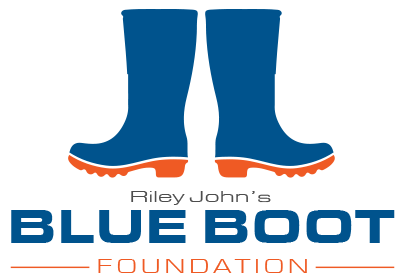Drowning Facts
4,012
Average Unintentional Drownings Each Year
11
Number of People That Drown Each Day
88%
Of Drowning Occur With At Least One Adult Present

Source: Center for Disease Control (CDC)
Downing Facts
More children ages 1-4 die from drowning than any other cause of death and it’s the second leading cause of unintentional injury death for children ages 5-14.
Ways you Can Prevent Drowning
Here are some key pieces of information that can help you prevent drowning
Learn basic swimming and water safety skills
Formal swimming lessons can reduce the risk of drowning. 1-5 Children who have had swimming lessons still need close and constant supervision when in or around water.
Build fences that fully enclose pools
Construct and use a four-sided fence that is at least four feet in height and fully encloses the pool and separates it from the house, with self-closing and self-latching gates [PDF – 20 pages]. Remove all toys from the pool area that might attract children to the pool when the pool is not in use.
Supervise closely
Designate a responsible adult to supervise closely and constantly when children are in or near water (including bathtubs). You can assign a specific adult to supervise each child when they have access to water. Adults watching kids in or near water should avoid distracting activities like reading, using the phone, and consuming alcohol or drugs, because drowning happens quickly and quietly.1,6 After swim time is over, shut and lock doors that give access to water. Be proactive and learn about any risks when visiting another home or unfamiliar location. Adults should supervise children closely even when lifeguards are present.
Wear a life jacket
Life jackets reduce the risk of drowning while boating for people of all ages and swimming abilities. Life jackets should be used by children for all activities while in and around natural water. Life jackets can also be used by weaker swimmers of all ages in and around natural water and swimming pools. Do not rely on air-filled or foam toys, as these are not safety devices.
Learn CPR
Your CPR skills could save someone’s life in the time it takes for paramedics to arrive. Many organizations such as American Red Cross and American Heart Association offer CPR training courses, both online and in-person.
Know the risks of natural waters
Lakes, rivers, and oceans have hidden hazards such as dangerous currents or waves, rocks or vegetation, and limited visibility. Check the forecast before activities in, on, or near water. Local weather conditions can change quickly and cause dangerous flash floods, strong winds, and thunderstorms with lightning strikes.
Use the buddy system
Always swim with a buddy. Choose swimming sites that have lifeguards when possible. The buddy system is especially beneficial for people with seizure disorders or other medical conditions that increase their risk of drowning.
Avoid alcohol
Avoid drinking alcohol before or during swimming, boating, or other water activities. Alcohol impairs judgment, balance, and coordination. Do not drink alcohol while supervising children.
Some people have a higher risk of drowning
Children
Children ages 1–4 have the highest drowning rates. Most drownings in children 1–4 happen in swimming pools. Drowning can happen even when children are not expected to be near water, such as when they gain unsupervised access to pools. Fatal drowning is the leading cause of death for children 1-4 and the second leading cause of unintentional injury death for children 5-14, behind motor vehicle crashes.
Males
Nearly 80% of people who die from drowning are male. Many factors might contribute to higher rates of drowning among males, including increased exposure to water, risk-taking behaviors, and alcohol use.
People with seizure disorders or certain medical conditions
People with seizure disorders such as epilepsy are at a higher risk of fatal and nonfatal drowning than the general population. Drowning is the most common cause of unintentional injury death, with the bathtub being the most common site of drowning, for people with seizure disorders. Other conditions such as autism and heart conditions are associated with a higher risk of drownin
Certain factors make drowning more likely
Not being able to swim
Many adults and children report that they can’t swim or that they are weak swimmers.17-19 Participation in formal swimming lessons can reduce the risk of drowning among children and young adults.
Missing or ineffective fences around water
Proper pool fencing can prevent young children from gaining access to the pool area without caregivers’ awareness. A four-sided isolation fence which separates the pool area from the house and yard reduces a child’s risk of drowning by 83% compared to three-sided property-line fencing (which encloses the entire yard, but does not separate the pool from the house).
Lack of close supervision
Drowning can happen quickly and quietly anywhere there is water, especially to unsupervised children. It happens in lakes and oceans, pools, bathtubs, and even buckets of water.
Not wearing life jackets
Life jackets can prevent drowning during water activities, especially boating and swimming. The U.S. Coast Guard reported 658 boating-related deaths in 2021—81% died by drowning, and 83% of these people were not wearing life jackets.





Water Watcher Cards
We have created the Blue Boot Foundation Water Watcher Card! It is a physical card with instructions for water safety. The holder is required to pledge that they will follow the rules on the card whenever they are near a body of water.
There is a tearoff section with a whistle attached so the holder can take turns and pass it on to other people if needed.
Our Water Watcher Cards are available for any school or organization upon request. They are included with our training program and are distributed every time we teach a class.
The Water Watcher card should be used at every pool function, boating, beach, or around any body of water. We ask that someone always carries one around when engaging in water related activities to ensure water safety.
Contact Us
